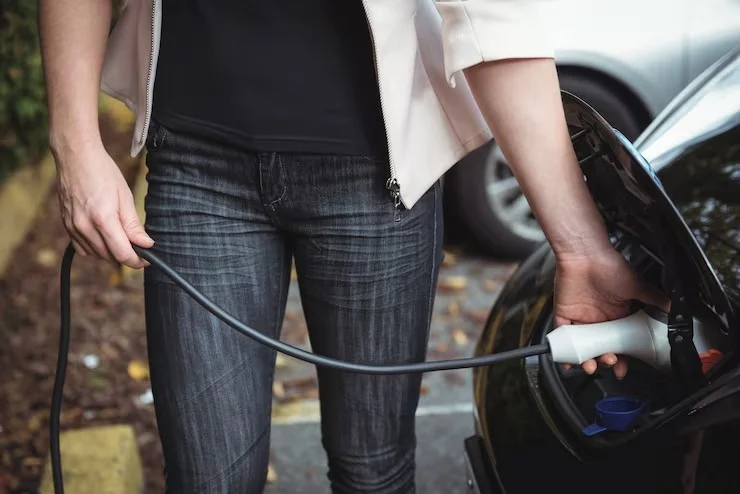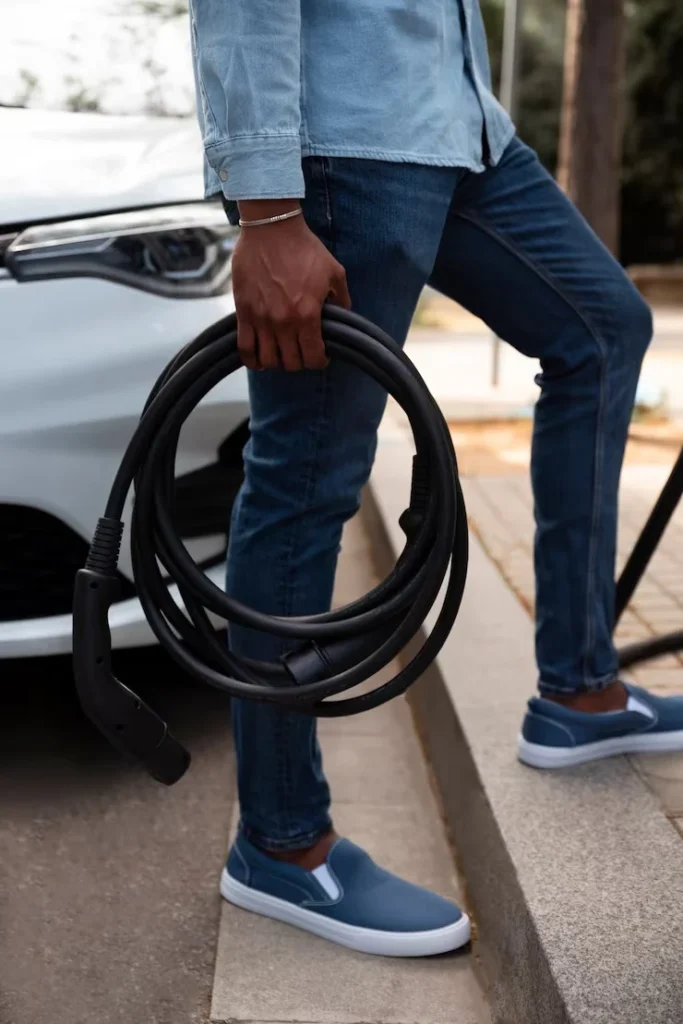As the world rapidly evolves into EVs, one concern for every EV owner would be “how do I protect my EV charging cable from theft?”. Since more people trust their home charging stations, their EV charge equipment is being left open in residential premises for a long time. This is invariably encouraging negligence and theft.
Having presented the Keyless charm of charging your car at home, this charm brings along certain vulnerabilities as the charger is lying exposed outside. We will explore the means of protecting an EV charger and some intelligent options to protect an external EV charging lock from being stolen in 2025.
Why the Increase in the Theft of Cables for EV Charging?
With the growing attention on electric cars, there have also been reports of theft of EV charging cables. These expensive cables are rather worthwhile stealing. Unfortunately, cases of theft DO exist, especially on public charging stations.
Several reasons drive an increase in the thefts of EVs. The main reason is because of the increasing popularity of EVs. As more people buy EVs, the demand for charging cables goes higher. These cables are expensive and have a great resale value. So, it is worth it for a thief to steal these.
In addition, the lack of a secure environment in public and in residential areas only encourages more such events. Several EV owners get out of their chargers. That way, it becomes a cake-walk for the thieves to steal cables.
With all of these difficulties of security that come with owning an EV, it is better to know how to secure your charger; that way, you won’t worry about paying a high amount as a replacement fee, and thus save yourself from becoming a victim.

How Do I Protect My EV Charging Cable from Theft?
Because there are several preventative measures possible in the year 2025, from the simplest to the very high-tech, let us now explore the better ways to secure your EV charger.
1. Locking Cable
Protecting your EV charger cable from theft simply by locking it is probably one of the most basic yet efficacious ways.
Lockable connectors: Many modern EV chargers feature a locking mechanism on the connector to ensure that the cable cannot be easily detached.
Integrated cable locks: Some cables carry a lock mechanism that allows the cable to be tethered to a fixed point, like a post or wall. When locked, the theft of the cable becomes much less feasible.
This lock is a moderate version of a cheaper one and is equally good; it imparts a feeling of immense comfort when one is in some public facility or in his or her driveway and worries about cable theft.
2. Installing a Lock on an Outdoor EV Charger
One can find many such products made to keep the charger and the cable secure in diverse environments when it comes to outdoor EV charger locks.
Physical Locks for the Charging Station: You loop the lock around the charging station so strongly that a thief will find it hard to unplug a cable and run away with it. The best outdoor EV charger locks have weather-resistant properties and can even sometimes be set up to secure both the charger and the cable.
Heavy-duty cable locks: Such locks are supposed to keep the EV charging cables secure. They are usually made of hard-to-break materials by dint of steel or reinforced plastics. So, they are not only tamperproof but also resistant to cutting and breaking. When you add some kind of security layer out there by using charger locks, the thief will rarely get away with the cable.
3. Use a Cable Hanger or Storage Box
Cable hangers and boxes provide a practical way to keep the cables secure. They also keep the cables from getting stolen by ensuring that the cables are neat and not just grounded.
Cable Hanger: The act of hanging the charging cable from a wall mount or hook diminishes the possibility of it being flung on the floor, hence unreachable by thieves.
Storage boxes: These weatherproof containers can be mounted on walls or outdoors. These provide you with a safe and concealed place in which to keep your EV charging cable. After placing your cable inside the box and locking it up, you can relax knowing that it is secure from curious hands.
This service is particularly beneficial to homes that have an outdoor EV charger. It gets the cable out of sight and guards it against inclement weather.
4. Go for a Smart EV Charger That Has Security Features
Supporting further the year 2025, security would be very important to your EV charger installation; therefore, most smart EV chargers now offer some protective features for the charger and cable.
Remote monitoring and alerts: Some smart EV chargers are equipped with sensors that can detect any attempt to tamper with the cable or the charger. If there is a security breach, the charger can immediately alert the user via an app or an email.
Access control for apps: This would allow users to lock or unlock the charging station remotely. Hence, the other party would not be able to plug into the charger without your permission.
Geo-fencing technology: For public charging stations, some smart chargers provide for geo-fencing, meaning that the charger will only work when you are within a certain distance from it.
Hence, all these hi-tech solutions smoothly hold your EV charger and cable safe if you are away from home or at a public charging station.
5. Setting Up Surveillance Cameras
Another way to deter thieves is to get a panoramic view of the whole charge spot by putting up cameras. Generally, a thief would not want to do any thieving with the act going half on camera. Certainly, security cameras hold the utmost deterrent against crime.
Visible cameras: Mount cameras so that the threat of surveillance shall be obvious to anyone wishing to partake in some fast stealing. Even if the cameras are fake or dummy models, they still do the trick of scaring the thieves off.
Hidden cameras: Should you want your monitors to be discreet, go for hidden cameras that blend well with the environment. This is useful when you do not want to advertise an outdoor EV charger lock.
With modern home security systems, cameras make for an easy install, and many have live streaming through an app to watch the camera from the bad side.
6. Consider GPS Trackers for Your EV Charger
GPS trackers are the solution to opportunities stalking, allowing one to check the whereabouts of a charger in his or her very important person. Just one great advantage: “smallest” means this little guy can be tucked in somewhere in the controller or under a wire, basically away from the view of a potential thief.
Track and recover: When your charger does go missing, the police can be provided with all the information that can help in tracking it down.
An expensive high-tech approach giving just enough extra margin of security for somebody who wants to be extremely sure that his or her EV charge set is insured against theft.
Security for EV Charging Cables of the Future: Innovations in 2025
New technologies emerge in 2025, while, with ever-aging needs, another is added for EV charger security. AI implementation in home charging systems is coming into the limelight as a predictive security feature. The charging systems use AI to learn from past patterns of usage and notice anything abnormal occurring, such as an attempt to unplug the charger without permission or to sabotage it.
New generation EV chargers are being trialed for biometric authentication, such as fingerprint or facial recognition. Such systems would permit genuine users to use the charger with an extra layer of security. One more consideration could be the blockchain technology, mixed with more kinds of connected devices in the IoT world, to give secure, immutable records of who used the charger and at what time, thus making the tampering of present access logs almost impossible. These new technologies will provide another degree of complexity in EV charger security in a very short time.

Why Is Electric Vehicle Charger Security at Stake This 2025?
As EVs get exponentially popular, so does the demand for EV chargers. Unfortunately, the incidence of thefts may become fairly common, especially in cities. As an owner of an EV, one has to take preemptive measures on security issues to avoid the inconveniences and costs arising from the replacement of stolen charging cables.
The landscape of EV charging security continues to evolve, presenting more sophisticated ways to secure your charging infrastructure- be it at home or away from it. Remedial steps include physical locks, smart security mechanisms, and surveillance systems aimed at risk reduction from theft. Any such action safeguards the investment.
Concluding Remarks
With the notable growth in the electric population somewhere in the year 2025, EV charging cable thefts have been making the run. Many options exist to help safeguard your EV setup. You could install outdoor EV charger locks or make something out of smart technology. Being equipped with this knowledge can leave you free to live your life without thinking of stealing EV cables and far more: the convenience lies in charging EVs at home.


